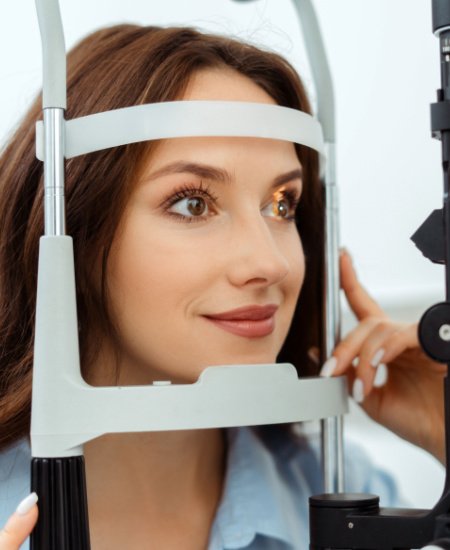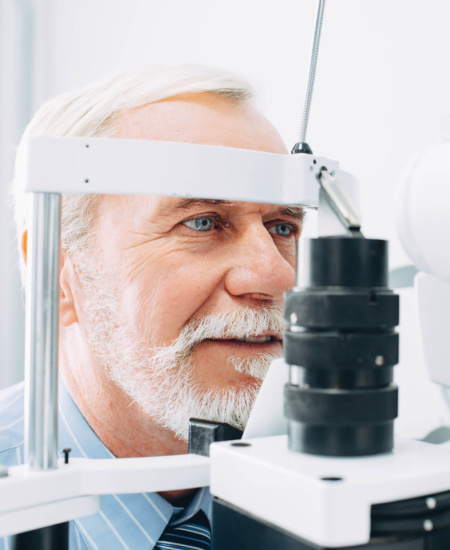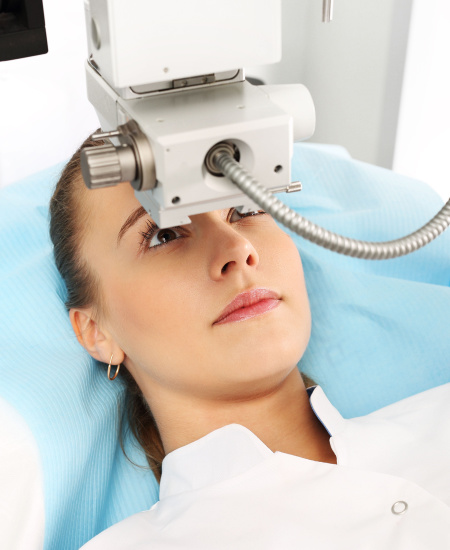Eye Laser Surgery in Turkey| Best Clinics, Prices, Reviews
Find the best clinics, doctors and affordable options for Eye Laser in Turkey, Istanbul!
Your health is in safe hands
Affordable Eye Laser in Turkey: Find Best-Quality Care at Reduced Costs
Eye Laser in Turkey PRO's
Trust us to arrange the best hospital and travel plan. We are always here to assist you.
- Skilled Eye Laser Professionals
- Renowned Laser Clinics
- Latest Technology
- Quick Recovery
- Affordable Laser Vision Correction
- Multilingual Medical Staff
- Personalized Care
- Positive Testimonials
Fill in the form Get a free consultation
- Need guidance and reassurance?
- Talk to a real person from MedClinics!
- Let’s find the perfect doctor together.
See Clearly Again with Laser Eye Surgery in Turkey
Are you tired of glasses? Your life can be easier without lenses or glasses. If you’re looking for eye laser, then try Turkey for better vision! Our skilled surgeons and high-tech tools make it safe and easy.
Laser eye surgery is like magic for your eyes. It uses lasers to fix your vision. So you won’t need glasses or contacts anymore. It’s quick and easy, and lots of people love the results.
Surgeons in Istanbul are well-known for eye laser. Also, you can choose Antalya or Ankara to reach the best quality and reliable healthcare service.
ReLEx SMILE, PRK, PRK with Wavefront, Femto Lasik, iLASIK, and LASEK are eye laser methods in Turkey.
Let’s explore them!

ReLEx SMILE
ReLEx SMILE stands for Small Incision Lenticule Extraction. It is used to correct common vision problems such as myopia and astigmatism. It is a modern and minimally invasive technique for refractive eye surgery.
The surgeon creates a precise, disc-shaped lenticule in the cornea using a femtosecond laser. To reshape the cornea and correct the refractive error, tissue must be removed.
ReLEx SMILE involves a small incision in the corneal surface to access and remove the lenticule. It is typically about 2 to 4 mm. This minimizes disruption to the corneal structure.
Through this small incision, the surgeon removes the lenticule and reshapes the cornea to correct the refractive error.
ReLEx SMILE is suitable for people with myopia, astigmatism or a combination of both. The procedure is particularly beneficial for those with thin corneas or a high risk of dry eye.
They include reduced risk of flap-related complications, less disruption to corneal nerves and potential benefits for corneal biomechanics.
You need to rest after ReLEx SMILE surgery. Use special eye drops given to you by your doctor. Avoid rubbing your eyes. Your vision may not be perfect immediately, but this is normal. Follow your doctor’s advice. Visit your doctor regularly. Recovery takes time but your eyes will gradually get better over a few weeks.

PRK
PRK stands for Photorefractive Keratectomy. It helps to correct eye problems such as nearsightedness, farsightedness or astigmatism. Just like ReLEx SMILE, it can improve your eyes without the need for glasses or contacts.
PRK does not involve flapping your eye. Instead, doctor carefully removes a thin layer from the surface. Then, a protective lens is inserted. This is removed once the cornea’s own layer has formed. By changing the shape of the cornea, the doctor can improve your eyesight.
It is mainly used for patients with thin corneal layers (flaps).
No flap creation on the cornea.
Suitable for people with thin corneas.
Potential for less dry eye compared to some other procedures.
Reduced risk of flap-related complications.
Alternative for those not suitable for LASIK.
After PRK surgery, your eyes need time to heal. Rest and avoid heavy activities. Use the eye drops your doctor gives you, and be patient for your vision to get better. Don’t rub your eyes. Attend check-ups to make sure everything is well. It takes time to heal, but your eyes will get better within a few weeks.

PRK with Wavefront
PRK with Wavefront is an advanced eye surgery type. It uses an additional technology called wavefront. This technology creates a detailed map of your eyes. This allows for even more personalized and precise treatment.
Eye’s genetic fingerprint is determined individually using 3D wavefront analysis. This is taken into account in the cornea treatment. With PRK, the flap is not removed by folding, but the superficial corneal layer is removed or separated because it is too thin. Then the actual laser treatment takes place. Finally, a protective lens is used. This is removed as soon as the cornea’s own layer has formed.
Patients with thin corneal layers (flaps) are treated with this method.
More precise and personalized treatment.
Tailored to each person’s unique eye characteristics.
Minimizes visual problems such as glare and halos.
Improve night vision for some people.
PRK with Wavefront takes time to heal. Your vision will gradually improve over several weeks. You should use prescribed eye drops, avoid rubbing your eyes, follow your doctor’s guidance and attend check-ups.

Femto LASIK
Femto Lasik is one of the most popular and innovative types of laser eye surgery. It involves using a computer-controlled femtosecond laser to make extremely precise incisions.
A femtosecond laser is used to create a flap on the cornea, and then another laser is used to reshape the cornea to improve vision. The flap is repositioned to help the healing process.
It is suitable for people with common vision problems such as nearsightedness, farsightedness etc.
The femtosecond laser allows precise flap creation. This improves surgical precision. Patients generally experience less discomfort during and after Femto-LASIK. Moreover, many people recover quickly with improved vision shortly after surgery.
Rest your eyes and avoid strenuous activity to help the healing process.
Use eye drops as directed.
Vision is usually restored quickly. However, some fluctuation is normal during the initial healing period.
Avoid rubbing your eyes.
Reduce screen time, especially in the early days. This will help to minimise eye strain.

iLASIK
iLASIK is also called Femto-Wavefront-LASIK. In iLASIK, every step of procedure can be customized. So, “i” means an individual.
The eye’s ‘genetic fingerprint’ is individually determined using 3D wavefront measurement analysis and taken into account during the corneal treatment.
It is performed on the cornea; the flap is created without cutting. Laser surgery with IntraLase heals faster. The non-contact femtosecond laser creates customised, optimised corneal flaps.
After wave-scanning technology, a more innovative technology is used to create your personal profile without cutting your corneal flap. Now your vision is improved with Advanced CustomVue technology as part of iLASIK procedure. The excimer laser system combines wavefront analysis, fully automatic iris recognition, variable spot scanning and variable laser pulse rate for personalised treatment.
If you correct your myopia, hyperopia, or astigmatism, you’re candidate for iLASIK.
Since iLASIK combines Femto-LASIK and Wavefront LASIK, it has the advantages of both.
Vision often improves immediately after iLASIK.
You should use eye drops and avoid heavy activities etc.

LASEK
LASEK stands for “Laser Assisted Sub-Epithelial Keratomileusis”. It is a surface laser process. This method is not very popular because it causes more discomfort and requires a longer recovery time than the LASIK procedure.
During the procedure, a very thin flap of the surface of the cornea is created using a special solution or a microkeratome rather than a laser. Then, the excimer laser is used to remove a small amount of corneal tissue. After laser treatment, the corneal flap is returned to its original position and adheres naturally without stitches. Over the next few days, the epithelial cells regenerate. This helps to reshape the cornea and improve vision.
It is often used when LASIK is not an option.
Some discomfort and blurriness is normal in the first few days after LASEK. Your eyes may be more sensitive to light.
Use the prescribed eye drops.
The thin epithelial flap created during the operation takes a few days to heal. Your doctor may place a bandage contact lens on the eye to protect the flap.
Healing times vary, so be patient. Your doctor will tell you when it is safe to resume normal activities.
Our patients are Happy & Healthy
Eye Laser in Turkey Reviews
Why Choose Eye Laser in Turkey
Accessible hospitals:
Major cities like Istanbul and Antalya have numerous hospitals.
Multilingual medical staff:
Communication is facilitated by medical staff who speak multiple languages.
Compassionate care:
Turkish healthcare professionals are known for providing personalized and compassionate care.
No waiting times:
You can easily get appointments in Turkey, even at short notice and with the most renowned clinics and sought-after doctors.
Modern facilities:
Turkish hospitals and clinics are equipped with the latest technology and meet international healthcare standards.
Affordable prices:
Compared to other countries, laser eye surgery in Turkey is significantly more affordable.
FAQ
What is eye laser surgery?
Laser eye surgery uses laser technology to reshape the cornea and correct common vision problems.
What are the different types of eye laser surgery?
ReLEx SMILE, PRK, PRK with Wavefront, Femto Lasik, iLASIK, and LASEK are eye laser methods.
Is eye laser surgery painful?
The procedure is usually painless because anesthetic eye drops are used.
Are there risks associated with eye laser surgery?
Risks are rare. They may include dry eyes, glare, halos, or infection.
How long does the procedure take?
The actual laser treatment usually takes less than 15 minutes per eye. You should learn detailed information from the doctor.
How much does eye laser surgery cost in Turkey?
Eye laser prices in Turkey start from €1400. You can contact us to learn more detailed information about eye laser costs in Turkey.
How long do I need to stay in Turkey for eye laser surgery?
It depends on the eye laser method. For example, you can often return home shortly after the operation if your method is LASIK, ReLEx SMILE or similar procedures. For procedures with longer initial recovery time, such as PRK or LASEK, the recommended stay may be longer. This period varies from a few days to a week.
Are Turkish eye surgeons experienced and qualified?
Yes, Turkish eye surgeons are often highly qualified and experienced. You can contact us to find best surgeon for your eye laser treatment.
Is it safe to travel to Turkey for eye laser surgery?
Yes, Turkey is a popular medical tourism destination and many patients travel for eye surgery.